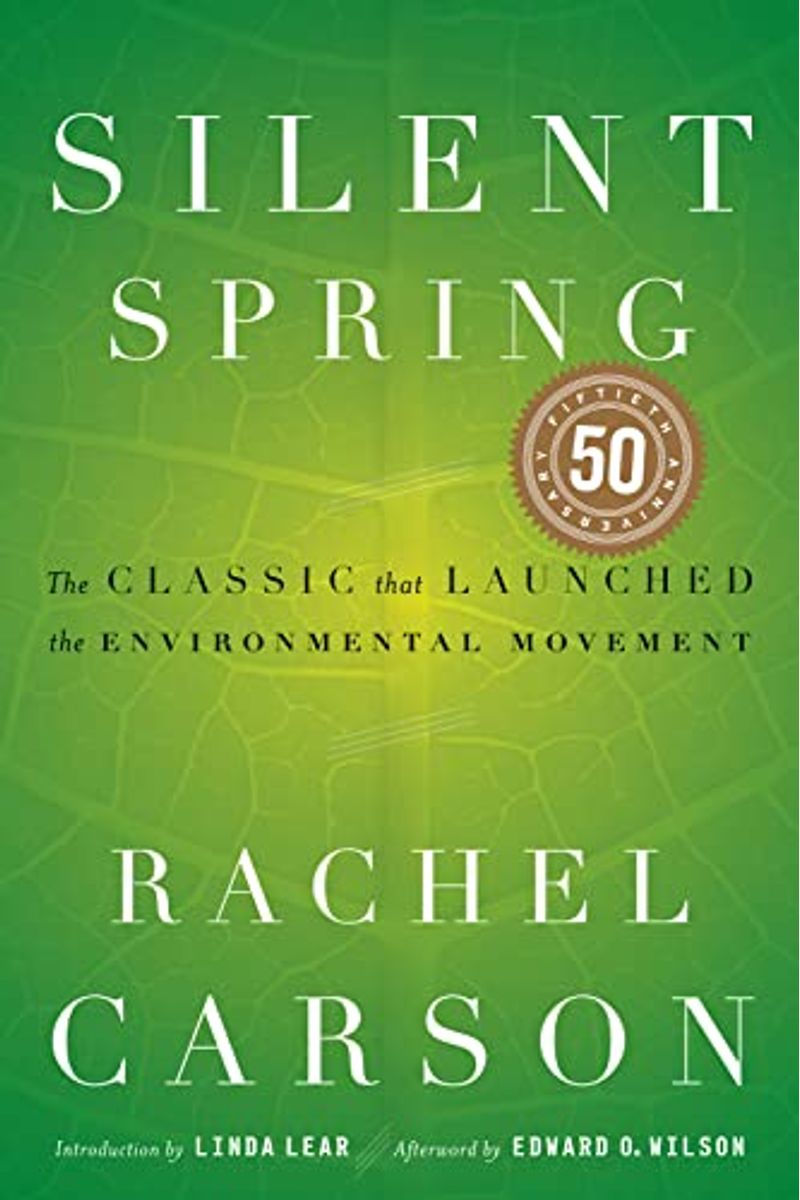The Fascinating Origin and History of Sustainability: From Ancient Times to Modern Movements

-
The Origins of Sustainability
- Mesopotamians and Indus Valley Civilizations
- Mayans and Egyptians
- Native Americans (Iroquois Confederacy - 1722)
- Industrial Revolution (1760)
-
Industrial Revolution and Its Impact on Sustainability
-
Development of the Modern Sustainability Movement
-
Rachel Carson’s "Silent Spring" (1962)
-
Understanding the Tragedy of the Commons (1968)
-
Sustainable Development Goals (2015)
-
Corporate Sustainability
-
Sustainable Architecture and Urban Planning
-
Sustainable Transportation and Energy
-
Challenges and Future Prospects of Sustainability
-
Final Thoughts on Our Journey of Sustainability
-
Related Posts:
The history of sustainability dates back to ancient civilizations, where communities lived in harmony with the natural world, recognizing the importance of preserving ecosystems and using resources wisely.
From these early practices, sustainability evolved through various movements and milestones driven by individuals, organizations, and governments.
By learning from the past, we can better understand the challenges we face today and work towards implementing sustainable practices in all aspects of our lives
The Origins of Sustainability
Sustainability, as a concept, has deep roots in history.
Various civilizations have embraced the principles of sustainability throughout time.
Mesopotamians and Indus Valley Civilizations
One of the earliest examples dates back to ancient civilizations, such as the Mesopotamians (4500 BCE) and the Indus Valley civilization (3300 BCE - 1300 BCE), who implemented sustainable agricultural practices to ensure the longevity of their crops and preserve their resources.
Modern public health initiatives echo the Indus Valley civilization’s emphasis on public sanitation and waste management.
Today's architects and city planners continue to study their urban planning principles.
Mayans and Egyptians
Similarly, ancient societies like the Mayans (2600 BCE) and the Egyptians (3000 BCE) practiced sustainable resource management to support their communities and thrive in harmony with nature.
Lisa Lucero, a Professor of Anthropology at the University of Illinois at Urbana-Champaign, explains the sustainability of the Mayans:
“Their worldview put them on an equal plane with other entities of the world like plants and animals. So, the Maya acknowledged the need to eat and hunt and all of this, but they did it with a different type of respect. So, they didn't overuse. As far as I know, the Maya never caused the extinction of any flora or fauna. So, the Maya work with the rainforest.
They work with the resources, they work with other entities, the other entities who also have a role in maintaining the world. And one point I want to make is the fact that the Maya have been farming in this area for over 4,000 years without denuding the landscape. Because of this diverse nature, this diverse interaction, they didn't have monocropping. They didn't rely on just one of anything. So, this diversity is key to their sustainable way of life.”
Native Americans (Iroquois Confederacy - 1722)
Like the Mayans, Native Americans have long been stewards of the land, practicing sustainable living for centuries.
Their deep connection to the earth and understanding of natural ecosystems has led them to develop practices that prioritize the health of the environment and future generations.
From cultivating crops in harmony with the land to respecting the balance of nature, Native American tribes have set an example for sustainable living that is increasingly relevant in today's world.
As we continue to face the challenges of climate change and environmental degradation, there is much we can learn from the wisdom and practices of Indigenous peoples.
One of the key principles of Native American sustainability is the idea of “reciprocity” - the understanding that humans are a part of, rather than separate from, the natural world.
Native Americans have long held a deep respect for the land and its resources, viewing themselves as stewards of the earth rather than owners of it.
This perspective shapes their approach to resource management (taking only what is needed), conservation (living in harmony with nature), and community well-being.
For example, the Iroquois Confederacy practiced a form of sustainable agriculture known as the “Three Sisters”, where corn, beans, and squash were grown together in a mutually beneficial way.
This not only ensured a balanced diet for the tribe but also maintained the health of the soil for future generations.
The Iroquois also had a philosophy called the “Seventh Generation” which “mandates that tribal decision-makers consider the effects of their actions and decisions for descendants seven generations into the future.”
In today's world, we tend to focus on the short-term gains and not consider the long-term consequences.
When decisions are made with only immediate benefits in mind, the long-term effects on the environment, society, and future generations are often overlooked.
It’s important to think like the Iroquois and consider how our actions today will impact the world we leave behind for future generations.
By recognizing and respecting Indigenous perspectives on the environment, we can learn from their wisdom and incorporate it into our efforts toward sustainability.
As we move forward, let us strive to honor the legacy of Native American communities and work together towards a more harmonious relationship with the Earth.
Industrial Revolution (1760)
The Industrial Revolution brought forth unprecedented challenges to the sustainability of our planet, as industrialization and urbanization rapidly depleted natural resources and caused massive pollution.
Industrial Revolution and Its Impact on Sustainability
The Industrial Revolution, which began in the 18th century, was a period of significant advancement in technology, manufacturing, and economic growth.
While it brought about remarkable progress and improved the standard of living for many, it also had a profound impact on sustainability.
The shift from small-scale, manual production to large-scale mechanized processes led to unprecedented levels of resource extraction, pollution, and environmental degradation.
During this period, the exploitation of natural resources increased exponentially to fuel the growing industries.
Coal and other fossil fuels were extensively used for energy production, resulting in widespread air and water pollution.
Forests were cleared to create space for factories and urban development, leading to habitat destruction and biodiversity loss.
Additionally, the intensification of agriculture to meet the demands of a growing population led to soil degradation and contributed to the loss of fertile land.
While the Industrial Revolution propelled humanity forward in terms of technological advancements and economic prosperity, it also greatly highlighted the necessity for more sustainable practices.
The negative impact on the environment and human health became increasingly apparent, giving rise to movements and initiatives towards sustainability.
These efforts aimed to find ways to balance economic growth with environmental protection, resource conservation, and social responsibility.
Development of the Modern Sustainability Movement
The modern sustainability movement has its roots in the early environmental and conservation movements of the 19th and 20th centuries.
As industrialization accelerated, concerns about the negative impacts on the environment began to arise.
Organizations such as the Sierra Club and Greenpeace played significant roles in raising awareness about environmental issues and advocating for conservation efforts.
However, it was not until the late 20th century that sustainability became a mainstream concept encompassing environmental, social, and economic dimensions.

Rachel Carson’s "Silent Spring" (1962)
One of the required readings for my environmental science coursework was "Silent Spring" by Rachel Carson.
This groundbreaking book was published in 1962 and is widely considered a pioneering work in the environmental movement.
The book discusses the detrimental effects of pesticides on the environment, particularly on birds and other wildlife.
Carson's meticulously researched work shed light on the dangers of chemicals such as DDT and their impact on ecosystems, human health, and biodiversity.
Silent Spring played a crucial role in raising awareness about the dangers of indiscriminate pesticide use and ultimately led to the banning of DDT in the United States.
The book had a profound impact on the environmental movement and continues to inspire me and many others advocating for sustainability and conservation.
Carson's call to action to protect the planet is as relevant today as it was over half a century ago, reminding us of the urgent need to address environmental issues and work towards a more sustainable future.
As we continue to grapple with pressing environmental challenges such as climate change and biodiversity loss, Carson's words serve as a powerful reminder of the importance of preserving and protecting the natural world for future generations.
Understanding the Tragedy of the Commons (1968)
The tragedy of the commons is an important concept I learned in my environmental science studies that highlights the inherent conflict between individual self-interest and the common good.
This theory, popularized by ecologist Garrett Hardin in 1968, refers to a situation where multiple individuals have access to a shared resource, such as a pasture or a fishing ground.
In these scenarios, individuals are incentivized to maximize their own personal gain by taking as much as they can or exploiting the resource without considering the long-term consequences for the group as a whole.
As a result, the shared resource becomes depleted or degraded, leading to negative outcomes for everyone involved.
The tragedy of the commons serves as a cautionary tale about the dangers of unchecked selfishness and the importance of collective action and cooperation in managing shared resources for the benefit of all.
This concept has been applied to a wide range of environmental and social issues, from overfishing in the oceans to the depletion of natural resources on a global scale.
By understanding the tragedy of the commons, we can better appreciate the need for sustainable practices and policies that ensure the preservation and equitable distribution of resources for current and future generations.
In the face of growing environmental challenges and increasing competition for limited resources, I believe the lessons of the tragedy of the commons are more relevant than ever.
Brundtland Report (1987)
The publication of the Brundtland Report in 1987 by the United Nations World Commission on Environment and Development marked a significant turning point.
The report introduced the idea of sustainable development, defined as “development that meets the needs of the present without compromising the ability of future generations to meet their own needs.”
Since then, sustainability has become an increasingly important global movement, driven by growing concerns about climate change, biodiversity loss, and social inequality.
Governments and international organizations have adopted sustainable development goals, committing to mitigating the effects of environmental degradation and promoting social justice.
Today, the modern sustainability movement continues to evolve, with a focus on creating a more sustainable future through renewable energy, B Corporations, circular economy, and responsible consumption.
It emphasizes the interconnectedness of environmental, social, and economic systems, highlighting the importance of collective action in achieving a more sustainable world.
Sustainable Development Goals (2015)
In the pursuit of a more sustainable and equitable future, the United Nations established a set of Sustainable Development Goals (SDGs).
These goals, adopted by all member states in 2015, aim to address some of the most pressing global challenges and guide efforts towards sustainable development by the year 2030.
The SDGs encompass a wide range of issues, including poverty eradication, climate action, gender equality, clean energy, responsible consumption, and sustainable cities, among others.
Each goal is interlinked and mutually reinforcing, recognizing the interdependence between social, economic, and environmental factors.
To achieve these goals, governments, businesses, civil society, and individuals must work together in a collaborative and coordinated manner.
Sustainable development requires systemic changes in policies, practices, and attitudes, promoting a holistic approach that leaves no one behind.
By understanding the history of sustainability and the journey towards these SDGs, we can gain insights into the challenges faced, the progress made, and the actions needed to ensure a sustainable and inclusive future for all.
Corporate Sustainability
Corporate sustainability is a concept that has gained significant attention in recent years.
It refers to the incorporation of sustainable and socially responsible practices within businesses and organizations.
This includes considering the environmental and social impacts of their operations and making efforts to minimize them.
The history of corporate sustainability can be traced back to the early 20th century when certain companies recognized the need for responsible business practices.
However, it was not until the 1970s and 1980s that sustainability gained mainstream recognition.
The growing concerns over environmental degradation and social inequality prompted companies to adopt more sustainable practices.
Over the years, corporate sustainability has evolved to become an integral part of business strategies, driven by a combination of regulatory requirements, consumer demands, and the realization of long-term benefits.
Today, companies across various industries are adopting sustainable practices to reduce their carbon footprints, conserve natural resources, and promote social well-being.
Corporate sustainability is no longer just a trend; it is necessary for businesses to thrive in an increasingly interconnected and conscientious world.
Sustainable Architecture and Urban Planning
Sustainable architecture and urban planning have become integral to modern society as we strive to create a sustainable future.
The concept of sustainability in architecture and urban planning focuses on minimizing the negative environmental impacts of buildings and cities while maximizing their efficiency and functionality.
The origins of sustainable architecture can be traced back to ancient civilizations such as the Indus Valley Civilization (see The Origins of Sustainability Section), where cities were meticulously planned with efficient drainage systems and advanced urban infrastructure.
Throughout history, various cultures and civilizations have incorporated sustainable principles, such as utilizing local materials and designing buildings with natural ventilation systems, to adapt to their environmental contexts.
However, sustainable architecture and urban planning did not gain significant attention until the 20th century, with the rise of environmental awareness.
Architects and urban planners now employ innovative techniques and technologies to create buildings and cities that reduce energy consumption, conserve resources, and promote the well-being of occupants.
From green roofs and rainwater harvesting systems to pedestrian-friendly neighborhoods and renewable energy integration, sustainability is now at the forefront of architectural and urban design.
Sustainable Transportation and Energy
When we talk about sustainability, it is important to consider not only how we use and manage resources but also how we transport ourselves and power our societies.
The history of sustainable transportation and energy is a chronicle of our efforts to find cleaner and more efficient alternatives to fossil fuels.
Numerous advancements in the transportation and energy sectors have contributed to a more sustainable future over the years.
In transportation, we have witnessed the rise of electric vehicles, the development of high-speed trains, and the promotion of cycling and walking as greener modes of transport in urban areas.
Regarding energy, we have seen a shift towards renewable sources such as solar, wind, and hydroelectric power, replacing traditional coal and gas-based energy production.
This transition has not only reduced our carbon footprint but also diversified our energy sources, making us less dependent on finite resources and enhancing energy security.
Challenges and Future Prospects of Sustainability
The history of sustainability is a testament to the human race's ongoing commitment to preserving the environment and ensuring a better future for generations to come.
However, the path towards achieving sustainability is not without its challenges.
One key obstacle is the difficulty of changing deeply ingrained habits and practices that have contributed to the depletion of natural resources and environmental degradation.
Overcoming this resistance requires widespread education and awareness to promote sustainable lifestyles and consumption patterns.
Additionally, the political and economic landscape poses its own set of challenges, as short-term interests often overshadow long-term sustainability goals.
Governments and corporations must find a delicate balance between economic growth and environmental stewardship to ensure a sustainable future for all.
Nevertheless, despite the obstacles, the future prospects of sustainability remain promising.
With advancements in technology and a growing global consciousness about environmental issues, there are numerous opportunities to forge a more sustainable path forward.
From renewable energy sources to sustainable agriculture practices, innovative solutions are emerging to address the pressing challenges we face.
Moreover, growing awareness and advocacy movements have raised public consciousness about the importance of sustainability.
Governments and organizations are also increasingly committed to promoting sustainable practices through policy initiatives and regulations.
Ultimately, achieving sustainability requires collective effort, collaboration, and a shared vision for a greener and more equitable world.
Final Thoughts on Our Journey of Sustainability
After taking a deep dive into the captivating history of sustainability, it is evident that the concept of preserving our planet and its resources has been embedded in human civilizations for centuries.
From ancient civilizations' practices of sustainable land management to the Industrial Revolution's birth of environmental movements, sustainability has evolved and adapted to society's ever-changing needs.
Throughout history, individuals and communities have recognized the importance of a harmonious relationship between humans and the environment.
Today, this understanding has been amplified as the precarious state of our planet demands immediate action. Despite the progress made, there is still much work to be done to ensure a sustainable future.
It is crucial to acknowledge that sustainability is not merely a temporary trend but a continuous journey.
Each generation inherits the legacy of previous efforts and carries the responsibility to build upon it.
By studying history, we gain valuable insights and inspiration for shaping a sustainable future.
We have the power to make a difference through small, daily actions and supporting global movements advocating for environmental preservation.
Let us continue to learn, grow, and work collectively towards a more sustainable world for generations to come.
Related Posts:
7 Groundbreaking and Inspiring Examples of Sustainable Architecture
3 Key Principles of Sustainable Development for a Greener Future
Environmental Justice: Ensuring a Sustainable Future for All
Breaking Down the Generation Gap: How it Affects Our Environmental Perceptions
Carbon Footprint: Understanding the Environmental Impact of our Actions
-
The Origins of Sustainability
- Mesopotamians and Indus Valley Civilizations
- Mayans and Egyptians
- Native Americans (Iroquois Confederacy - 1722)
- Industrial Revolution (1760)
-
Industrial Revolution and Its Impact on Sustainability
-
Development of the Modern Sustainability Movement
-
Rachel Carson’s "Silent Spring" (1962)
-
Understanding the Tragedy of the Commons (1968)
-
Sustainable Development Goals (2015)
-
Corporate Sustainability
-
Sustainable Architecture and Urban Planning
-
Sustainable Transportation and Energy
-
Challenges and Future Prospects of Sustainability
-
Final Thoughts on Our Journey of Sustainability
-
Related Posts:









